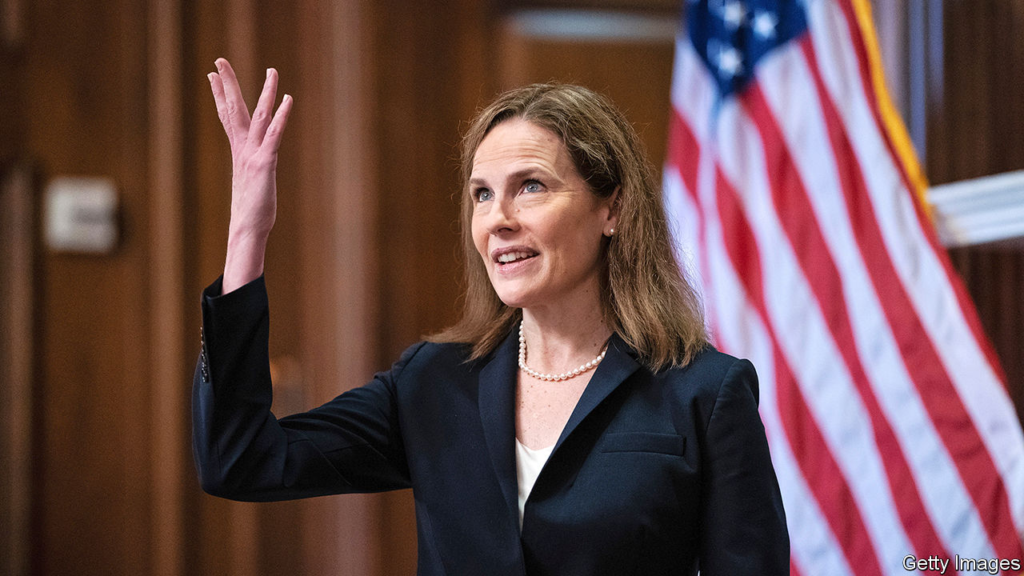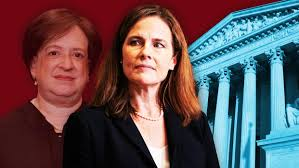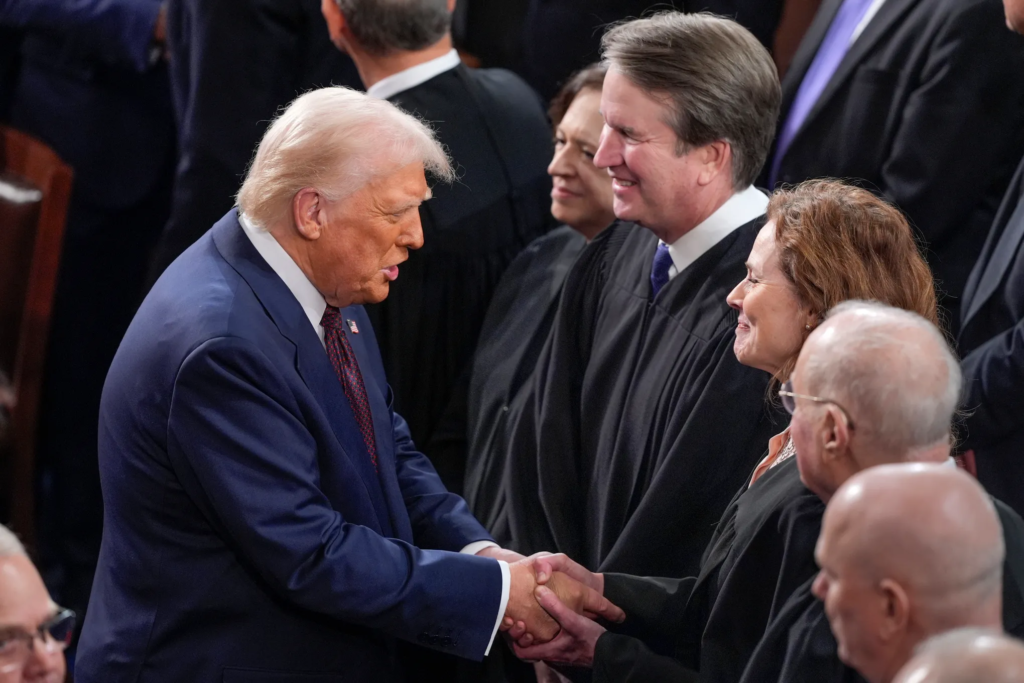In recent months,Rulings Ignite Debate Supreme Court Justices Amy Coney Barrett and Elena Kagan have found themselves at the center of heated discussions about the role of the judiciary in American politics. Their rulings in high-profile cases, particularly those involving the Trump administration’s policies, have sparked widespread debate, not only in legal circles but also across social media platforms. From birthright citizenship to federal funding disputes, their judicial decisions are shaping public discourse and raising questions about the balance of power, judicial independence, and the influence of the Supreme Court in today’s polarized climate.

A Clash of Perspectives in the Courtroom
The Supreme Court has always been a lightning rod for controversy, but recent cases have highlighted the contrasting approaches of Justices Barrett and Kagan. Barrett, appointed by former President Donald Trump in 2020, was expected by many to be a reliably conservative voice on the bench. However, her recent rulings have surprised some, showing a willingness to break ranks with her conservative colleagues. Kagan, appointed by President Barack Obama in 2010, is a well-established liberal voice known for her sharp questioning and pragmatic approach to legal interpretation. Together, their interactions in court have drawn attention for their intellectual rigor and, at times, unexpected alignment.
One of the most talked-about cases involves the Trump administration’s executive order on birthright citizenship. This policy, which aimed to end automatic citizenship for children born in the U.S. to non-citizen parents, faced significant legal challenges. During oral arguments, both Barrett and Kagan pressed Solicitor General D. John Sauer on the administration’s stance regarding judicial authority. Kagan questioned how the government would respond if lower courts uniformly ruled the executive order unconstitutional. Barrett followed up, expressing skepticism about the administration’s claim that it might not always respect circuit court rulings. Her pointed question—“Did you just say you’re not going to listen to what a circuit court says?”—struck a chord, resonating with those who value judicial authority as a check on executive power.

This exchange, widely shared on social media, underscored a rare moment of alignment between the two justices, despite their ideological differences. Barrett’s willingness to challenge the Trump administration’s lawyer, alongside Kagan’s incisive questioning, sparked a flurry of online reactions. Some praised the justices for defending the judiciary’s role, while others, particularly Trump supporters, criticized Barrett for not aligning with the administration’s agenda.
Barrett’s Unexpected Independence
Barrett’s judicial record has been a focal point of discussion. While she has consistently voted with conservatives on issues like abortion and gun rights, her recent decisions suggest a more nuanced approach. In a case involving $2 billion in foreign aid, Barrett joined Chief Justice John Roberts and the court’s liberal justices—Sonia Sotomayor, Elena Kagan, and Ketanji Brown Jackson—to uphold a lower court’s order to unfreeze the funds. The Trump administration had blocked the aid as part of an effort to curb what it called “waste, fraud, and abuse.” Barrett’s vote, which broke from the conservative majority, drew sharp criticism from some Trump supporters, who labeled her a “disappointment” and even called her appointment a “mistake.”
Social media platforms have amplified these sentiments, with hashtags and posts questioning Barrett’s loyalty to the conservative cause. Some users have gone as far as calling her a “DEI pick,” a term that has stirred controversy for its implications about her qualifications. Despite this, legal scholars and defenders of Barrett argue that her rulings reflect a commitment to judicial principle over political allegiance. Her approach, often described as pragmatic and incremental, prioritizes narrow rulings that avoid sweeping changes to legal precedent.
Kagan’s Role as a Liberal Anchor
Elena Kagan, on the other hand, has long been a steady voice for the court’s liberal wing. Known for her ability to build coalitions and her clear, persuasive writing, Kagan has used her platform to challenge the court’s conservative majority. In the birthright citizenship case, her questioning highlighted the potential consequences of the Trump administration’s position. She asked what would happen to individuals who lose out on protections if the government only respects court rulings for named plaintiffs. Her concerns about fairness and access to justice resonated with many, particularly those who see the judiciary as a safeguard for individual rights.
Kagan’s influence extends beyond the courtroom. Her ability to articulate complex legal issues in a relatable way has made her a favorite among legal commentators and social media users alike. Posts praising her sharp intellect and commitment to judicial integrity often trend alongside discussions of Barrett’s rulings, creating a narrative of two justices navigating a deeply divided court.

Social Media Amplifies the Debate
The public’s reaction to Barrett and Kagan’s rulings has been amplified by social media, where opinions range from thoughtful analysis to fiery rhetoric. Platforms like X have become battlegrounds for debates about judicial influence, with users dissecting the justices’ questions, votes, and perceived motivations. For some, Barrett’s willingness to side with liberal justices is a sign of judicial independence; for others, it’s a betrayal of the conservative values she was expected to uphold. Kagan, meanwhile, is often celebrated by progressive users for her defense of judicial authority, though some criticize her for not pushing harder against the court’s conservative majority.
These online discussions reflect broader anxieties about the Supreme Court’s role in American life. With the court increasingly seen as a political institution, every ruling is scrutinized for its ideological implications. Barrett and Kagan’s recent actions have fueled debates about whether justices should strictly adhere to legal principles or reflect the political leanings of the presidents who appointed them. This tension is particularly evident in cases involving controversial issues like immigration and federal funding, where public opinion is sharply divided.
The Broader Implications
The debates surrounding Barrett and Kagan’s rulings touch on fundamental questions about the judiciary’s role in a democracy. Should justices prioritize consistency with their appointing president’s agenda, or should they act as independent arbiters of the law? Barrett’s critics argue that her votes against Trump’s policies undermine the conservative agenda, while her supporters see her as upholding the rule of law. Kagan’s supporters, meanwhile, view her as a critical check on executive overreach, though some question whether her pragmatic approach can effectively counter the court’s conservative supermajority.
These cases also highlight the power of nationwide injunctions, a legal tool that allows federal judges to block executive actions across the country. Barrett and Kagan’s skepticism about the Trump administration’s resistance to these injunctions has sparked discussions about the balance between judicial and executive power. If lower court rulings can be ignored, as the administration suggested, it could weaken the judiciary’s ability to protect individual rights—a concern that both justices emphasized in their questioning.
Looking Ahead
As the Supreme Court continues to hear cases with far-reaching implications, Barrett and Kagan are likely to remain in the spotlight. Their interactions in the courtroom, marked by sharp questioning and occasional alignment, offer a glimpse into the complex dynamics of a court navigating a politically charged era. While Barrett’s independence has surprised some, it also underscores the unpredictability of judicial decision-making. Kagan’s steady presence, meanwhile, serves as a reminder of the importance of clarity and principle in legal arguments.
The social media buzz surrounding these justices shows no signs of slowing down. As users continue to share clips of oral arguments, quote opinions, and debate the court’s direction, the influence of Barrett and Kagan extends far beyond the marble walls of the Supreme Court. Their rulings are not just shaping legal precedent—they’re shaping the way Americans think about justice, power, and the role of the judiciary in a divided nation.
In a time when trust in institutions is shaky, Barrett and Kagan’s actions offer both hope and controversy. Whether you see them as defenders of the law or lightning rods for political division, one thing is clear: their influence is undeniable, and the conversation about their roles is just getting started.
Must Read :- Top 10 Best U.S. Colleges Changing Education in 2025






